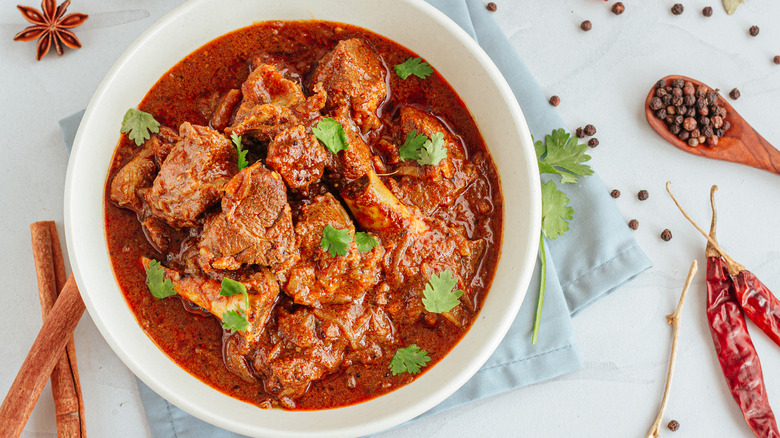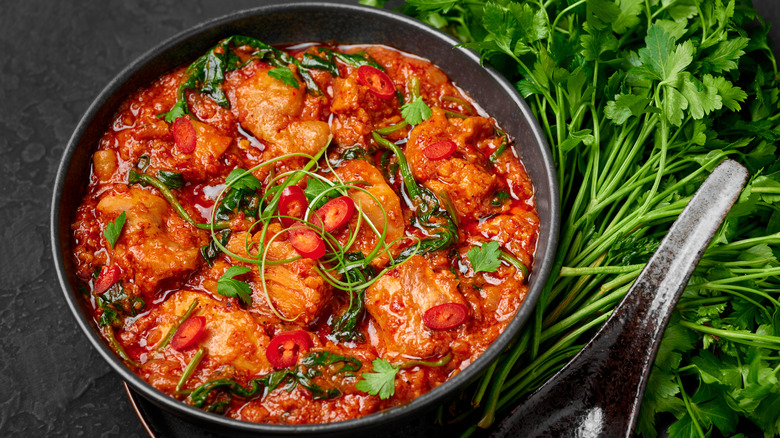What You Should Know Before Eating Vindaloo At An Indian Restaurant
The flavor bombs in many Indian dishes are second to none. Full of aromatic spices, creamy rich sauces, and crispy textures, a fiery kick is also a big promise in many plates. One particular dish that is often considered among the hottest is vindaloo (via The Diplomat) as it often incorporates an ingredient called Bhut jolokia, aka ghost peppers, one of the hottest varieties in the world. Live History India notes that, in Britain, the steamy curry has regularly been eaten in a competitive manner and even became the inspiration for the English team's unofficial anthem during the 1998 World Cup. So, before you order it next time, know things will definitely get hot when you start eating the dish.
Beyond the modern footnotes, there's a long history of vindaloo and where it originated. It's said that the dish was brought to India by Portuguese explorers hailing from the region known as Madeira around the 15th century, according to Live History India. They developed a way to preserve meat and fish, ideal for lengthy travels, by marinating them in wine vinegar and garlic. One particular dish was called carne de vinha d'alhos and it eventually found its way to India's Goa region, where it became a trademark recipe.
According to Saveur, the usual ingredients like wine vinegar were not available in India and so, some adaptations were made. Instead, they used palm wine and added some distinct touches such as tamarind, black pepper, cinnamon, and cardamom. The Portuguese also made another significant contribution to the dish, says the magazine, sharing those incredibly hot chili peppers that were then a delicacy.
Modern versions of vindaloo honor this rich heritage
When the British arrived in India in the late 1700s, they discovered the dish thanks to the Goan-Catholic cooks they enlisted (via Saveur). But when the dish went with them back to Britain, its subtle spiced flavor and vinegary tang took on a new taste. Saveur remarks that the meat was rarely marinated, and an excess of hot chilis took over the once fragrant spice blend. British versions also added potato to the curry, confusing the name vindaloo with the extension "aloo," meaning potato in Hindi (via Takeaway.com).
Nowadays, depending on where you eat vindaloo, these varied influences will be apparent. You may find some authentic Goan styles with subtler spices including cloves, cinnamon, cumin, black peppercorns, coriander, cardamom, and chili pepper. Or, more likely, you might come across an extremely spicy curry with flavors barely noticeable beneath the heat.
Unless you can find a restaurant specializing in Goan cuisine or have a Goan friend cooking for you, it might be worth it to try your hand at an authentic international recipe like this one courtesy of Sukhi's. There's also modifications you can make — while the original Portuguese dish used pork, vindaloo can be made with other meats, poultry, fish, or simply vegetarian. If you're going to make it extra spicy, you might also want to serve a yogurt-based sauce such as raita or a refreshing lassi to tone down the heat.

